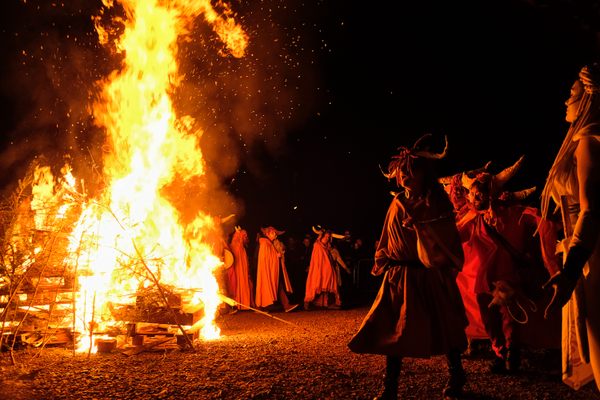Clootie Wells: Where the Trees Are Weighed Down in Rotting Rags
Clootie Well, Munlochy, Scotland (photograph by Davie Conner)
In scattered sites around Scotland, England, Ireland, and other places where the pagan roots still show through the modern landscape, you may catch a glimpse of a spooky sight: trees weighed down with rotting clothing and rags clustered around a spring. Known as clootie wells, the ritual dates back to Celtic belief in the cures of water spirits, and continues as a source of spiritual healing.
While the ritual varies around the different clootie wells — named for the Scottish word “clootie” referring to cloth — the principle is that by leaving a rag on the tree, before or after cleansing a tortured part of your body with it using water from the spring, you will receive some relief from illness or pain as it disintegrates in the forest. The sites were historically visited before sunrise, and on sacred festival days. As Lizanne Henderson and Edward J. Cowan explain in Scottish Fairy Belief: A History: “The efficacy of such curing processes varied but might not be complete until the rags had completely deteriorated.”
In some places, human hair, coins, whole items of children’s clothing, and other offerings join the ripped bits of fabric, sometimes marked with written messages. It’s considered very bad luck to take any of the offerings, although there’s been concern that the quantity of rags is hurting the trees.
The clootie wells are not as numerous as they once were, but several survive, many now dedicated to Christian figures like St. Boniface. For example, in Scotland there’s one near Munlochy on the Black Isle, while in Cornwall there’s Madron Well, Alsia Well, and Sancreed Well, and in Ireland one at Loughcrew. And they still have a draw in troubled times, as in the summer of 1940 when the clootie well in Culloden, Scotland, was draped with colorful rags during the loss of the 51st Highland Division to the Germans on the beaches of Saint-Valéry-en-Caux.
Below is a video from the Black Isle of Scotland clootie well, as well as some images. Even if you’re not superstitious, it is haunting to know that each of the mouldering rags represents some scrap of hope left behind to rot away a pain.
The Black Isle Clootie Well (photograph by Amanda Slater)
The Black Isle Clootie Well (photograph by Amanda Slater)
The Black Isle Clootie Well (photograph by Amanda Slater)
The Black Isle Clootie Well (photograph by Amanda Slater)
Discover more of the world’s curious rites and rituals on the Atlas Obscura >















Follow us on Twitter to get the latest on the world's hidden wonders.
Like us on Facebook to get the latest on the world's hidden wonders.
Follow us on Twitter Like us on Facebook